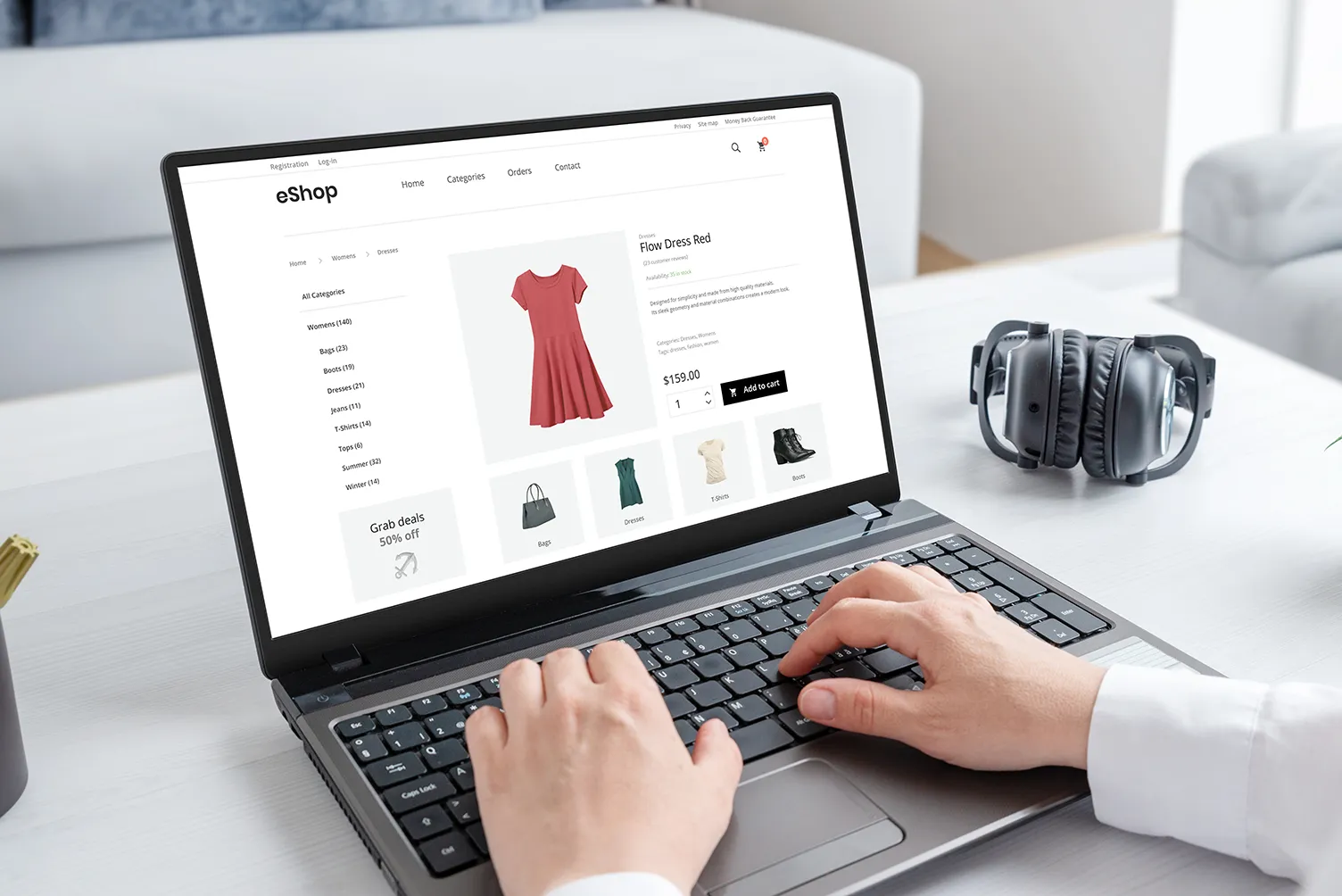UX Design: How UX Impacts SEO and the Importance of User-Centred Design


In an ever-evolving digital landscape, UX (user experience) is fast becoming more important than ever, for consumers and businesses alike.
Improving the experience of a digital product obviously reaps rewards for the end user themselves. But how does UX design add value to a business? We can simply view this as a domino effect; good UX is essential when it comes to improving usability for consumers, which in turn leads to good user satisfaction, loyalty and engagement onsite. As a result, businesses retain users, leading to higher conversion rates and optimising revenue potential.
Not only is this crucial from a user perspective, but UX also directly correlates with SEO performance and organic rankings. Implementing combined strategies for both UX and SEO can take your online success to new levels.
What Is User Experience (UX) And Why Is It Important?
User experience refers to how we interact - either consciously or subconsciously - with any product or service, whether that be physical or digital. Technological and everyday modern life advances are leading to the continuous and rapid growth of digital consumption and interaction, and the ever-growing competitive digital market as a result.
In this evolving digital landscape, a well researched, designed and implemented user experience has never been more important. According to Hubspot, 88% of online consumers won’t return to a website after a poor user experience. Prioritising user experience within the design and development of any digital product allows businesses to become strong contenders amongst competitors, both for saturated and niche markets.
It’s important to remember that UX is an iterative and ongoing process. As businesses and digital trends evolve, it can result in a product that no longer meets company or user goals as it used to. Collect and analyse user data and test continuously to identify areas, pages or features where support is most needed and will be most impactful to refine the product or service experience.
The Relationship Between SEO and UX
So, why is UX design important for SEO? SEO and UX are two disciplines that go hand-in-hand. In simple terms, SEO drives organic traffic to a website, and the user experience (UX) creates the first impression for the visitor once onsite. However, the importance of UX is vital not only from a user-centric perspective, but also from a rankings perspective.
Google’s evolving algorithms means that search ranking factors are, at least in part, determined by the application of UX best practices. Google’s Chrome user experience report (CrUX) collects real user data metrics to inform how users experience a site and is used by Google Search to determine the Page Experience evaluation.

How Exactly Does Google Determine How Good a Website’s Experience Is?
Google search considers a variety of user experience criteria to establish a page's experience 'score', most importantly:
- Core Web Vitals, a set of metrics to determine loading speed, interactivity and visual stability of a page.
- Mobile responsiveness and accessibility, increasingly important to align with mobile website access worldwide.
- Serving pages securely.
- Ease of navigation; are users able to navigate to or locate intended content?

Good application of the above UX best practices will allow Google to gain a holistic picture of the quality of users’ experience onsite. Not only will this be rewarded from an SEO perspective, but will enhance the overall user experience for users, and ultimately business goals.
Combining rich SEO and UX strategies also paves way for a strong competitive advantage. Optimising SEO to its full potential and drawing in high volumes of traffic to a site is no doubt great, but if the onsite experience is poor from a user's perspective, you are at risk of unintentionally diverting customers back to search engine results, and consequently to competitors’ sites.
Both SEO and UX best practices are an integral and collaborative part of any digital marketing strategy that can be the driving force to achieving long-term success.
What Does UX Design Include?
The foundation of success in digital products is the well-thought implementation of UX best practices. UX design encompasses a range of disciplines, including user research, from both a data-led and holistic approach, information architecture and usability testing, and should precede and inform any design or development work, to avoid design decisions being made as a result of internal bias or assumptions. Some of the many elements of UX research and design include:
- User analysis, derived from both quantitative data analysis and qualitative user research.
- Usability and heuristic evaluation.
- Website performance, in particular speed and load times.
- Website (in particular mobile) and user accessibility.
- Brand identity, awareness and authority.
- Content, design and navigation.
- User interface design.
This user-centred approach is not only beneficial for end-users themselves, but allows businesses to maximise both cost and time efficiency in the long term, ensuring the delivery of digital products that users want and need.
What’s the Difference Between UX and UI Design?
User experience (UX) and user interface (UI) design are often confused and used interchangeably, when they are in fact, two different concepts. Although considered as separate roles, the two do go hand-in-hand and should work together to harmonise a balance between visual design and functionality.
In short, UX design refers to the overall feel and experience of a product by a user, understanding user needs, conducting research, wireframing, prototyping and designing intuitive interfaces. UI design refers to the visual aesthetics and interactive elements of a digital product such as colours, typography, buttons and many visual elements, to create visually appealing end interfaces.

Aesthetic vs Usability
Usability (UX) and aesthetics (UI) should be balanced and seamlessly compliment each other, rather than favouring or compromising one discipline over another.
The aesthetic-usability effect concludes that the correlation between users’ ratings of aesthetic appeal and perceived ease of use is stronger, and that users are strongly influenced by the aesthetics of interfaces. A strong UI design can subconsciously lead users to believe a product actually works better, and can disguise minor usability issues or encourage users to be more tolerant of minor functionality flaws. According to Hubspot, 75% of users judge a site’s credibility based on how it looks, with 94% of first impressions being design-related.
However, Hubspot also defines that 90% of users stopped using an app or website due to poor performance. UX and UI can both create great results with one or the other, but combining the strengths of both fields can create a multitude of success. For example, UX can generate thorough product and user research, ideas and prototyping to create a product that slips into a market gap and really gives consumers what they want. But the UI hasn’t been optimised, text may be illegible or poor colour contrasts and users become frustrated and exit their onsite journey with the product.
In today’s competitive market, the two should be used seamlessly to complement each other, getting both fields right is key.
Key Takeaways
UX is a broad discipline of which the above only scratches the surface. When integrated with SEO and UI fields, the potential for high success reaches new heights.
- The digital landscape is ever-evolving, as are users' expectations and business goals. Consistent research and UX iterations are the key pillar to success in staying up to date with technical advances in any market.
- Consistent UX analysis of existing digital products encourages a competitive advantage, identifying user pain points or discovering new features to improve the product and its experience.
- SEO and UX best practices should be integrated to a successful coherent marketing strategy. UX is gaining momentum in becoming a ranking factor, as well as being crucial from a consumer perspective.
- User-centred research and design should precede any visual user interface design and web development, to maintain the end users’ needs at the forefront.
- Usability (UX) and aesthetics (UI) should not comprise each other’s potential, and instead work harmoniously together for maximum output and user satisfaction.
- Lastly, bridging the gap between SEO experts, UX researchers and designers, UI designers and web developers can open the gates to wider marketing success.
Unsure where to start with the implementation of UX best practices? Our team of SEO, UX and design and development experts at ICS-digital are here to help.
Get in touch to find out more about how our UX audits can guide you on the path to digital success.










